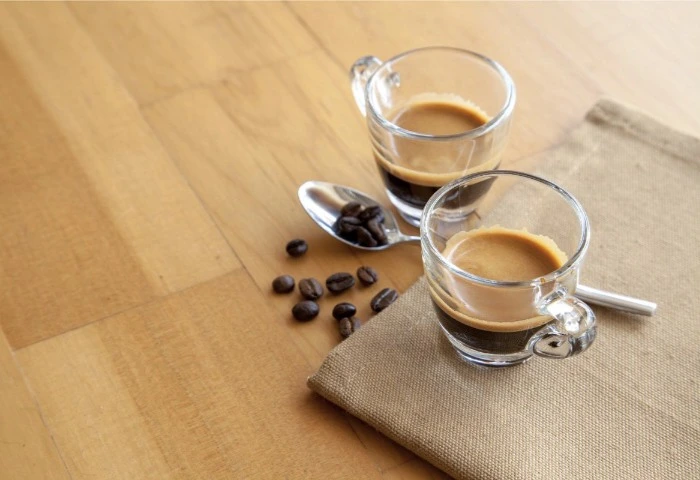Espresso is more than just a strong cup of coffee. It is a brewing method, a culture, and a way of life for many coffee lovers. But where did it all begin? The invention of espresso is tied to Italy, but the story is deeper than just a country’s name. This article explores the origins of espresso, the people behind it, and how it became a global phenomenon.
The Birth of Espresso in Italy
Espresso was invented in Italy in the late 19th and early 20th centuries. The word “espresso” comes from the Italian term meaning “pressed out” or “expressed,” referring to the way hot water is forced through finely-ground coffee. The first true espresso machine was developed in the early 1900s, but the journey to its creation began earlier.
Before espresso, coffee was brewed slowly using methods like the French press or drip brewing. Italians wanted a faster way to make coffee without sacrificing flavor. The solution was pressure. By using steam or mechanical force, coffee could be brewed in seconds rather than minutes.
The First Espresso Machine
In 1884, Angelo Moriondo, an Italian inventor from Turin, patented an early version of an espresso machine. His design used steam and water to brew coffee quickly. However, Moriondo’s machine was large and meant for bulk brewing in cafes, not individual servings.
The machine that truly revolutionized espresso was created by Luigi Bezzera in 1901. Bezzera improved Moriondo’s design by adding a portafilter, which held the coffee grounds, and a system that forced hot water through them under pressure. This produced a stronger, more concentrated coffee in just 30 seconds.
Desiderio Pavoni later bought Bezzera’s patent and made further improvements. In 1905, Pavoni’s company, La Pavoni, began mass-producing espresso machines, making them available to cafes across Italy.
How Espresso Spread Across Italy
At first, espresso was mostly served in Italian cafes and bars. The speed of brewing made it ideal for busy urban areas. Workers could stop for a quick coffee break without waiting long. The rich, intense flavor also appealed to Italian tastes.
By the 1930s, espresso machines had evolved. The introduction of the lever-operated machine by Francesco Illy in 1935 allowed for better pressure control. Then, in 1947, Achille Gaggia invented the modern piston-driven espresso machine, which used a spring lever to create high pressure. This method produced the creamy layer known as “crema,” a hallmark of quality espresso.
The Global Expansion of Espresso
After World War II, Italian immigrants brought espresso culture to other countries. The United States, Australia, and parts of Europe saw the rise of espresso bars. In the 1950s and 1960s, companies like Gaggia and Faema exported machines worldwide, making espresso accessible outside Italy.
The rise of coffee chains in the late 20th century, like Starbucks, popularized espresso-based drinks such as lattes and cappuccinos. While these drinks adapted to local tastes, they kept the core espresso method intact.
The Science Behind Espresso
Espresso is unique because of its brewing process. Unlike drip coffee, which relies on gravity, espresso uses pressure—usually 9 bars or more. This extracts flavors and oils quickly, resulting in a concentrated shot.
Key factors in making good espresso include:
Grind size: Fine, like table salt, to ensure proper extraction.
Water temperature: Around 90-96°C (194-205°F) for optimal flavor.
Pressure: Consistently high to force water through the coffee evenly.
Brew time: Typically 25-30 seconds for a balanced shot.
Espresso vs. Other Coffee Brewing Methods
Espresso differs from other brewing methods in several ways:
Strength: Espresso is much more concentrated than drip coffee.
Brew time: Espresso takes seconds, while methods like French press take minutes.
Crema: Only espresso produces this signature foam layer.
Equipment: Espresso requires specialized machines, unlike simpler methods like pour-over.
The Cultural Impact of Espresso
In Italy, espresso is more than a drink—it’s a ritual. Italians usually drink espresso standing at a bar, often in one quick sip. Adding milk is rare after midday. This tradition reflects the Italian preference for strong, fast coffee.
Globally, espresso has influenced coffee culture. Cafes worldwide serve espresso-based drinks, adapting them to local preferences. The “third wave” coffee movement has also emphasized high-quality espresso, with baristas trained to perfect every shot.
Modern Espresso Machines
Today’s espresso machines range from commercial models to home appliances. Key types include:
Manual lever machines: Require skill but offer full control.
Semi-automatic machines: Balance automation and manual input.
Super-automatic machines: Grind, tamp, and brew with the push of a button.
Innovations like programmable settings and pressure profiling allow baristas to experiment with flavors.
The Future of Espresso
Espresso continues to evolve. New brewing techniques, sustainable practices, and advanced machines push the boundaries of what espresso can be. Yet, the core principles—pressure, speed, and quality—remain unchanged.
Conclusion
Espresso was born in Italy, shaped by inventors like Moriondo, Bezzera, and Gaggia. From its early days in Turin cafes to its global dominance, espresso has remained a symbol of speed, strength, and sophistication. Whether enjoyed in a bustling Italian bar or a specialty coffee shop, espresso’s legacy is as rich as its flavor.
Understanding its history helps us appreciate every sip—and the centuries of innovation behind it.
Related topics:
Where to Buy Gaggia Espresso Machines: A Complete Guide
Buon Giorno Coffee: A Journey to Exceptional Espresso & Beyond
How Long to Pull a Double Shot of Espresso


